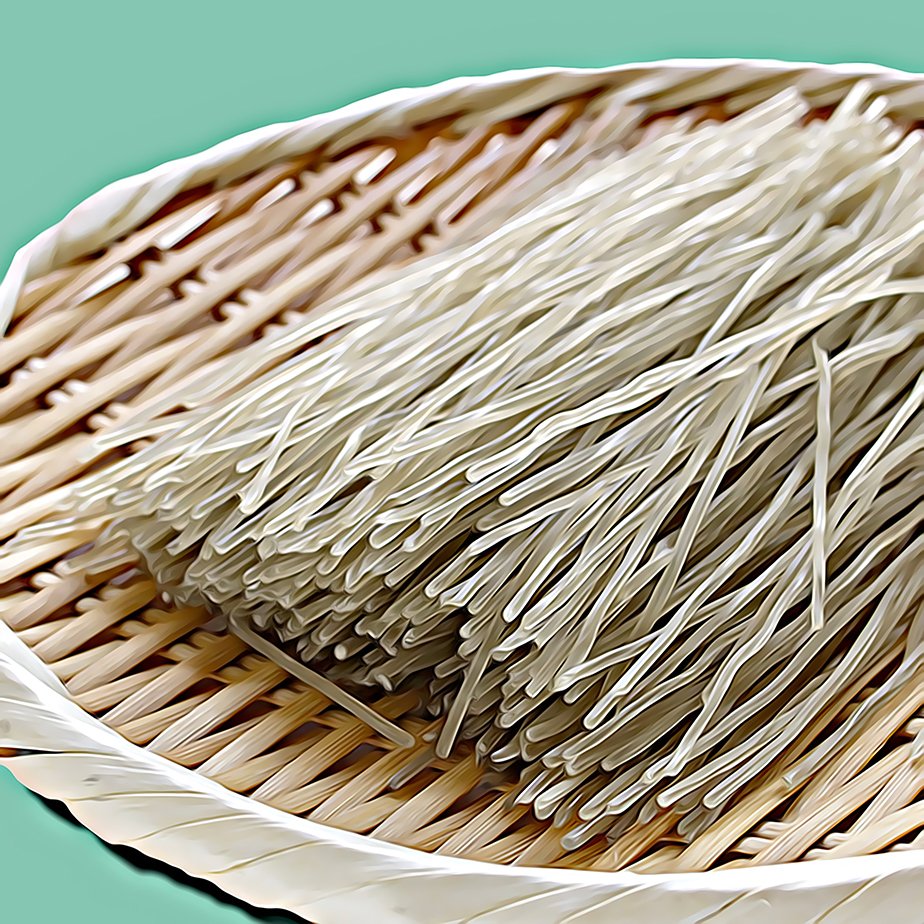Miso
It’s thought that miso was first made in China, then introduced to Japan sometime during the 7th century. It was considered a luxury product and not available to plebs. Like us. (Yeah, really. Imagine life with no miso soup to wash down your sushi. That would suck). At some time during the Muromachi Period (1392–1573), farmers starting growing more soybeans, learned to make their own miso, and regular dudes could finally use it in their cooking. Phew!
Miso is made by fermenting soybeans and grains with salt and a type of fungus called Aspergillus oryzae. The result is the thick paste we all know and love, whose colour and taste varies according to the precise ingredients, season, region, duration of fermentation and the type of fermenting vessel. There are four main types: barley, soybean, rice and blended miso; 80% of all miso made in Japan is rice miso. As well as classification by raw material, miso is also categorised by taste (‘low-salt’, ‘sweet’ and ‘strong’) and colour; red, light (or yellow) and white. It’s maybe by colour that we best recognise types of miso.
All miso is made the same way; steamed soybeans or cooked grains are first mixed with the koji (the starter containing the fungus).The koji plays a crucial role in breaking down starches into sugars, which are then fermented by other microorganisms to give the finished product. The mixture is incubated in a warm, humid environment for around 48 hours, allowing the mould to grow, and then salt is added. Salt is a preservative and inhibits harmful bacteria taking hold. Next, the paste is blended with additional cooked soybeans or grains, transferred to fermentation vessels (traditionally made of wood or ceramic), and sealed from air. It ferments for an extended period, ranging from several weeks up to several years and the duration informs the flavour. Various microorganisms, including lactic acid bacteria and yeasts, develop, creating those signature glutamate-rich (aka umami-rich) notes. After fermentation and subsequent aging, the miso is typically blended and smoothed to achieve consistent flavour and texture.
Naturally fermented miso is a living substance and should be cooked gently or the beneficial microorganisms will be killed through overheating. If you’re adding it to a soup or braise, for example, don’t let it boil. It’s rich in nutrients (vitamin K, vitamin B, manganese, zinc, protein and calcium, for starters) and high in probiotics, making it great for your gut.
When using miso always whisk it into a hot liquid before adding to sauces or soups, and dissolve it in the vinegar before adding to dressings; this avoids unpleasant lumps. Once opened, store your miso in a tightly sealed container in the fridge; lighter varieties will keep for about 9 months and darker ones up to a year. But always check the use-by date and steer clear of varieties with additives, like MSG.
White (‘shiro’) miso is the most widely produced type and is made from a larger percentage of rice, some barley, and a smaller percentage of soy beans than other misos. Aged for a short period (3-4 weeks), it’s nutty, sweet and ‘soft’ tasting, containing the least amount of salt of the miso types. It’s highly adaptable in the kitchen – use it in everything from soups, dressings and sauces to a butter replacement in mashed potato or spread on bread. You can even use it in sweets.
Yellow (’shinshu’) miso is made from soybeans fermented with barley and sometimes a small percentage of rice. It’s yellow to light brown in colour. Slightly stronger tasting than white but way milder than red miso, it is great for general use in soups, marinades, dressing and even dips.
Red (‘aka') miso is aged up to three years and is saltier than white and yellow types. and even a little astringent. It’s made with a higher percentage of soybeans than other types of miso. With its salty and assertive edge (it can be a little pungent) it’s best used in hearty, rustic soups, braises and marinades. Use it lightly or it can take over.
Potatoes cooked in miso
Cut into 800g peeled all-purpose potatoes into 2.5cm pieces. Cook in boiling salted water for 5 minutes; the potato will not be tender. Drain well. Whisk together 500ml (2 cups) chicken or instant dashi stock and 100g (⅓ cup) white miso until smooth. Combine in a saucepan with the potatoes. Cover the surface with a round of baking paper, cover with a lid, then simmer gently for 20 minutes or until the potatoes are soft. Serves 4 as a side.
Orange-miso dressing
Combine 100g (⅓ cup) yellow miso, 60ml (¼ cup) each rice vinegar, vegetable oil and orange juice, 1 tbsp honey, 2 tsp grated orange rind and 2 tsp finely grated ginger in a blender or food processor. Process or blend until creamy, adding a little more orange juice if it’s too thick. Drizzle over leafy salads or toss through coleslaw. Makes just over 1 cup.
Caramel-miso sauce
Combine 220g (1 cup) caster sugar and 60ml (¼ cup) water in a saucepan and cook over medium heat for 10 minutes or until the mixture caramelises. Taking care as the mixture will spit, add 2 tbsp butter, 160ml (⅔ cup) pouring cream and 3 tbsp red miso, swirling the pan until the sauce is smooth. Serve warm over ice-cream. Makes about 2 cups.







